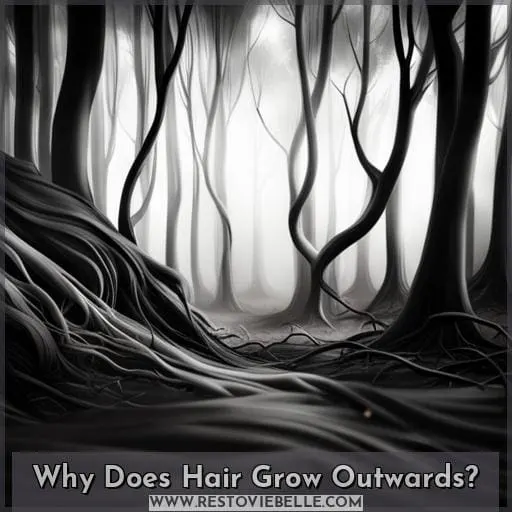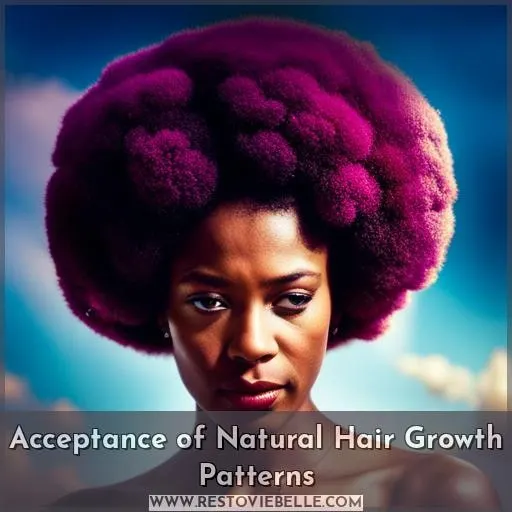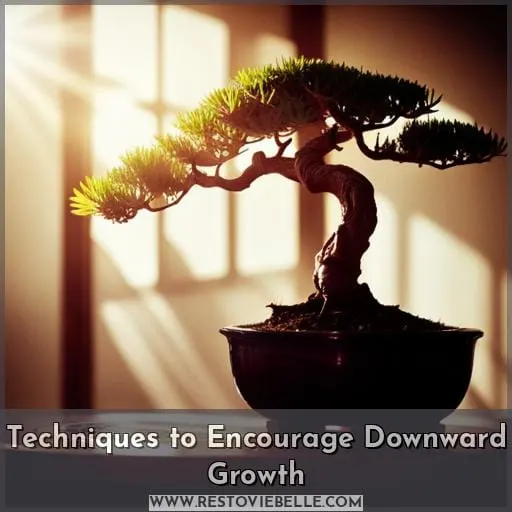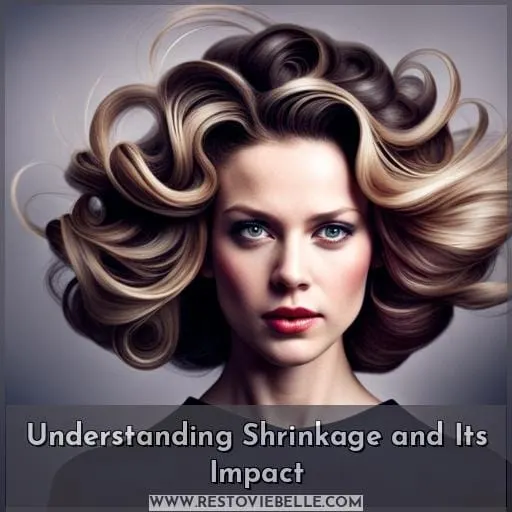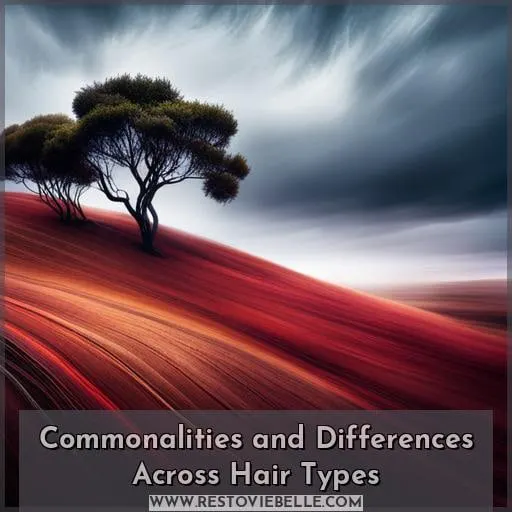This site is supported by our readers. We may earn a commission, at no cost to you, if you purchase through links.
 Imagine the frustration of trying to style your hair, only for it to grow outwards instead of down. But fear not! In this article, we will delve into the fascinating reasons behind why hair grows in such a way and explore effective styling techniques to embrace and enhance your natural hair growth pattern.
Imagine the frustration of trying to style your hair, only for it to grow outwards instead of down. But fear not! In this article, we will delve into the fascinating reasons behind why hair grows in such a way and explore effective styling techniques to embrace and enhance your natural hair growth pattern.
Get ready to unlock the secrets of taming and understanding your unique locks, empowering you with knowledge on how best to care for and style your beautiful mane.
Table Of Contents
- Key Takeaways
- Why Does Hair Grow Outwards?
- Factors Influencing Hair Growth Direction
- Acceptance of Natural Hair Growth Patterns
- Techniques to Encourage Downward Growth
- Understanding Shrinkage and Its Impact
- Commonalities and Differences Across Hair Types
- Frequently Asked Questions (FAQs)
- Can hair growth direction be permanently changed?
- Are there any techniques or products that can encourage hair to grow downward?
- Why does curly hair naturally grow outwards and not down?
- Is there a way to minimize shrinkage and encourage more length in curly hair?
- Are there any common factors that influence hair growth direction across different hair types?
- Conclusion
Key Takeaways
- Hair growth direction is influenced by factors such as genetics, overall hair health, weight, and manipulation.
- Acceptance and expression of natural hair growth patterns are influenced by societal and cultural norms, as well as personal confidence and identity.
- Techniques such as product usage, styling methods, and hydration and conditioning can influence the direction of hair growth.
- Understanding shrinkage and its impact is important for managing the perceived length of hair and implementing strategies for length retention.
Why Does Hair Grow Outwards?
Have you ever wondered why hair tends to grow outwards rather than hanging down?
There are several factors that contribute to this natural growth pattern.
One of the main factors is texture and curl pattern, with coarser hair textures and tightly coiled curls promoting outward growth.
Genetic factors also play a role in determining the direction of hair growth, as well as the overall health and condition of your hair.
Texture and Curl Pattern
If you have curly hair, the texture and curl pattern play a significant role in why your hair grows outwards rather than down. Genetic influences determine these patterns, which can lead to expectations of upward and outward growth.
Understanding how to maintain and style curls is essential for managing shrinkage, promoting healthy hair growth, and defining your curls with appropriate techniques.
Genetic Factors
You may wonder why your hair grows outwards instead of hanging down, and the answer lies in genetic factors. Understanding these influences can help you navigate styling challenges and embrace your unique texture diversity.
Insights into curl patterns shed light on growth acceptance, while maintaining healthy upkeep trims ensures optimal hair growth.
Hair Health and Condition
To understand why hair grows outwards, it’s important to consider the role of hair health and overall condition.
Factors such as deep conditioning, porosity, type, texture, and length affect the direction of growth.
Proper care and use of suitable products can promote healthy growth while minimizing split ends and damaged strands.
External factors like weather also influence hair health.
Factors Influencing Hair Growth Direction
When it comes to understanding why hair grows outwards instead of downwards, there are a few factors that influence the direction of hair growth.
One significant factor is weight and gravity – the weight of your hair can determine whether it hangs down or grows outward.
Additionally, how you manipulate and style your hair can also play a role in its growth direction.
By considering these factors, you can better understand why your hair may grow outwards rather than straight down.
Weight and Gravity
As we delve further into the understanding of why hair grows outwards, it’s important to consider the role that weight and gravity play in influencing the direction of hair growth.
Weight management and gravity affect how your hair hangs down or stands up, ultimately determining its growth direction. Understanding these factors can help you style your hair more effectively and achieve desired looks.
Consider these styling techniques for managing the weight and direction of your hair:
- Using heavier products to encourage downward growth
- Applying products mainly to the ends for added weight
- Experimenting with different product combinations
- Recognizing that not every product works for everyone
Hair Manipulation and Styling
Styling and manipulating your hair plays a significant role in determining the direction of its growth. Various techniques can influence the way your hair grows, allowing you to have more control over its appearance.
By using specific styling methods and products, such as a beard comb or beard oil for facial hair care routines, you can manipulate the effects of gravity on your strands. Understanding these manipulation techniques is essential for achieving the desired styling impact and directing your hair in a particular direction that suits your preferences.
Acceptance of Natural Hair Growth Patterns
Embracing your hair’s natural growth pattern is essential for maintaining healthy and beautiful locks. Accepting the way your hair naturally grows can be a challenge, especially when societal and cultural influences often promote specific beauty standards.
However, embracing your unique growth journey allows you to express yourself authentically and confidently.
Acceptance challenges:
- Societal Influences – Society often imposes narrow definitions of beauty that may not align with natural hair patterns.
- Cultural Influences – Cultural norms or expectations can influence how individuals perceive their own hair.
- Styling Confidence – Embracing natural growth patterns requires confidence in styling techniques that enhance rather than alter the way your hair naturally grows.
- Self-Expression – Your hairstyle is an expression of who you are; accepting and working with its natural direction allows you to showcase your true self.
By acknowledging the challenges surrounding acceptance, we empower ourselves to embrace our unique features fully.
Techniques to Encourage Downward Growth
To encourage downward growth and achieve a laid-down appearance, there are several techniques you can try.
First, consider using heavier products such as butters, oils, and creams to weigh down your curls.
Additionally, defining your curls through techniques like shingling or finger coils can help them clump together and lie down instead of standing on end.
Finally, combat dryness and shrinkage by deep conditioning regularly and avoiding heat styling.
Defining Your Curls for a Laid-Down Appearance
To achieve a laid-down appearance for your curls, try defining them using various techniques.
Enhancing definition is key in managing your curls and encouraging downward growth.
One effective method is shingling, where you apply a leave-in conditioner or curl cream and use your fingers to smooth the product onto small sections of hair.
Another technique is finger coils, where you twist small sections of wet hair around your fingers coated with styling cream or leave-in conditioner.
The wash n’ go method involves applying a leave-in conditioner or curl cream to wet hair and letting it air dry for soft, defined curls.
It’s important to combat dryness and shrinkage by deep conditioning weekly, using hydrating products like moisturizing creams or oils, avoiding heat styling that can cause moisture loss and damage.
For enhancing definition while combating shrinkage:
- Use SheaMoisture Curl Stretch Pudding: This product defines and stretches curls with cocoa butter.
- Try Dark & Lovely Anti-Shrinkage Crème Glaze: Formulated specifically for taming frizz while adding definition.
- Bounce Curl Avocado & Rose Oil Cream: Ideal for tight curls as it offers deep hydration.
Experiment with different techniques until you find what works best for your unique curl pattern!
Understanding Shrinkage and Its Impact
Understanding shrinkage is crucial in comprehending why hair grows outwards instead of downwards.
Shrinkage refers to the natural tendency of curly and coily hair to appear shorter than its actual length due to the tightness of the curls or coils.
This phenomenon occurs because as coiled strands dry, they contract and coil back upon themselves, leading to a reduction in visible length.
Despite this shrinkage, proper hair care practices can help combat it and allow for optimal growth and styling options.
How Shrinkage Affects Hair Length
If you have curly hair, you may be familiar with how shrinkage can significantly impact your hair length.
Shrinkage impact on length variation is a common challenge faced by individuals with curly or coily hair.
The amount of shrinkage experienced can vary depending on factors such as texture, weather conditions, and hydration balance.
Styling techniques like using beard softener,hair products specifically designed for curls, training beard hairs to grow in a certain direction,may help combat the effects of shrinkage and achieve desired hairstyles while maintaining healthy curls.
Combatting Shrinkage With Proper Hair Care
One important aspect of understanding and combatting shrinkage is recognizing its impact on hair length.
Shrinkage can significantly affect the perceived length of curly or coily hair, making it seem shorter than it actually is.
To manage shrinkage and retain length, incorporating hydration techniques and anti-frizz strategies into your hair care routine is crucial.
Using styling products specifically designed to fight shrinkage can help define curls while stretching them for a longer appearance.
These tips will aid in combating shrinkage and achieving desired length retention for your natural hair growth journey.
Commonalities and Differences Across Hair Types
When it comes to understanding commonalities and differences across hair types, there are a few key points to consider.
Firstly, different hair textures exhibit initial outward growth patterns before eventually growing downwards with increased length.
Additionally, type 4 hair tends to have more upward and outward growth patterns compared to other textures.
Understanding these dynamics can help individuals better understand their own natural hair growth pattern and how best to style it accordingly.
Similarities in Initial Outward Growth
When it comes to the initial growth of hair, there are commonalities across different hair types in their tendency to grow outward. Understanding these similarities can help you manage volume and define your curls effectively.
Some styling techniques that can encourage downward growth include:
- Using heavier products like butters and creams.
- Applying products mainly to the ends of your hair for added weight.
- Experimenting with different curl-defining techniques.
Incorporating these strategies into your routine will help you navigate through any awkward phases or challenges during the growth process.
Type 4 Hair Dynamics
Type 4 hair, including coily and kinky textures, exhibits unique dynamics that differentiate it from other hair types.
Texture acceptance plays a crucial role in understanding and embracing the natural growth pattern of type 4 hair.
Styling techniques such as using moisturizing products and practicing proper moisture management are essential for length retention and managing shrinkage challenges.
By incorporating effective methods like beard wax or texturizing products, individuals can enhance their curly hair growth journey while maintaining healthy natural moisture levels.
Frequently Asked Questions (FAQs)
Can hair growth direction be permanently changed?
Yes, hair growth direction can be permanently changed through surgical procedures such as hair transplantation or scalp reduction.
These methods involve redistributing the hair follicles to alter their natural growth pattern and achieve desired results.
Are there any techniques or products that can encourage hair to grow downward?
To encourage downward hair growth, try using heavier products like butters and oils to weigh down your curls.
Experiment with different styling techniques such as shingling or finger coils to define your curls and promote a more laid-down appearance.
Why does curly hair naturally grow outwards and not down?
Curly hair naturally grows outwards instead of downwards due to the inherent structure of the hair follicles.
The unique shape and pattern of curly hair cause it to coil and expand, resulting in a voluminous appearance that tends to defy gravity.
Is there a way to minimize shrinkage and encourage more length in curly hair?
Minimize shrinkage and unlock more length in your curly hair by embracing strategic styling techniques.
Experiment with heavier products to weigh down curls.
Define them with shingling or finger coils.
Combat dryness for a more laid-down appearance.
Are there any common factors that influence hair growth direction across different hair types?
Factors such as texture, weight, gravity, and hair manipulation influence hair growth direction.
While different hair types exhibit initial outward growth patterns, longer lengths can lead to downward growth.
Accepting natural patterns is essential for individuals seeking liberation and understanding.
Conclusion
Unlock the secrets behind why hair grows outwards instead of down and discover effective styling techniques to embrace and enhance your natural hair growth pattern.
Understanding the factors that influence hair growth direction, such as texture, genetics, and hair health, empowers you to care for and style your mane with confidence.
Embrace your unique locks and learn techniques to encourage downward growth, including defining your curls for a laid-down appearance.
Say goodbye to frustration and hello to beautiful, manageable hair.

